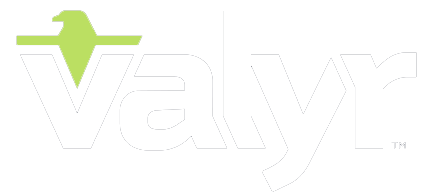A concept that was a bit nebulous (pun intended) a decade ago is now a modern mainstay of how business gets done. Cloud technology allows organizations to decouple their operating budgets from the massive cost of hardware upgrades and focus more on customization rather than trying to conform to a specific software system. Even with 94% of businesses in the US using at least some sort of cloud system, there are still lots of doubts and worries about a full-scale cloud home for your company. Let’s hit on those concerns and realize why a native cloud environment isn’t just something to consider, but the best possible home for your business to succeed in.
The Cloud Craze of 2020
If it feels like one day you woke up and every competitor in your industry had migrated to the cloud, well, that’s sort of what happened. The stunning cascade of business failures and bankruptcies that accompanied the first few months of the COVID-19 pandemic in the spring/summer of 2020 proved one thing beyond a shadow of a doubt: If you couldn’t adjust to dramatically changing circumstances, your company was headed the way of the dinosaur. Some 61% of surveyed companies migrated to the cloud in 2020, desperate for a way for employees to keep working without the central brick-and-mortar office that had been the linchpin for more than a century. But “heading to the cloud” isn’t exactly a sound business plan, and that’s where we come in.
Not everything in your business model is better on the cloud, and there are multiple options to what cloud service makes the most sense for your needs. At American WebDevs, we work exclusively in Amazon Web Services (AWS) and Digital Ocean. AWS is the pioneer of the cloud-managed service industry, setting up its first offerings in 2006, which is about the equivalent of Henry Ford designing a Lamborghini Diablo while everyone else was still trying to copy the Model T – truly ahead of its time. Some of the biggest companies in the world are housed on AWS. DigitalOcean is a few years younger and concentrates on startups and small-to-medium businesses (SMBs). We have great relationships with both companies which allows us to come up with the most flexible, affordable, and efficient plan for your needs. And that’s really the point, and an exciting one at that. Cloud isn’t about your company fitting into the cloud model, it’s about building the cloud environment to fit your specific company’s wants and needs. A lot of firms don’t even really know what that looks like for them, because they’re so used to having to adapt what they do to the limitations of what’s available.
Strategies & Services
A common misnomer of life in the cloud is that you have to commit to different versions of the same software systems and apps that your company used in its on-premise hardware. We’re not just on the hunt for the best apps to suit your needs, we’re fully invested in developing software and solutions that are customized to be exactly what you want in terms of freeing your processes from mistakes and bottlenecks and syncing all of your business units together so that they can share data, allow employees to collaborate, and avoid the tired old silo mentality that frustrates production and alienates camaraderie. This is the rub-the-magic lamp mentality that we are creating. We’re building the environment that your employees can access from anywhere and that houses every bit of data, every app, and every software need you could possibly ever have.
The Great Cloud Migration
Legacy systems aren’t just named to make their creators feel good about themselves, but because they’ve been running the way a company does business for years, possibly even generations. Plenty of developers will tell you that they can take the guts of your legacy system and make it infinitely faster and smarter with a shiny new coat of paint in a cloud environment, but that’s a great case of failing to listen and understand what a client is saying to you. Having an older system by no means makes it out of date, out of shape, or ready to ship out to the glue factory.
Transitioning your legacy system to a cloud environment is going to allow you to keep doing the work you know on the system you trust with the power of continuous up-time and outstanding cybersecurity behind it. It’s truly the best of both worlds from a certain perspective – the system you know paired with the most impressive features of the cloud environment.
Hidden Perks of Life on the Cloud
It’s not all about efficiency and savings when your company moves to the cloud. There are a couple of hidden gems in that transition that will make your company a little greener and much less reliant on in-house IT troubleshooting as well.
For starters, most brick-and-mortar offices weren’t built to handle the heat coming off of their computers and out of the server room, particularly as power demands go up and up. But data centers where AWS and DigitalOcean keep their hardware were designed with those climate needs specifically in mind. Research group Accenture suggests that the full-scale migration of companies to the cloud can reduce the amount of carbon dioxide emissions by some 60 million tons a year; the rough equivalent of taking 22 million cars off the road for good.
Additionally, just think about how many times a week someone in your IT department has to travel station by station around the workplace, solving a litany of computer problems for employees. When you transition to the cloud, those responsibilities shift hands and your IT professionals are free to get back to what their original purpose was: handling maintenance of systems and processes and handling more big-picture issues.
The greatest power of the cloud is that it can literally encompass any needs your company has, expand (or contract) in size and scope at a moment’s notice, and display the kind of flexibility that leaves no problem without an immediate solution. Whether you’re looking to make a wholescale switch or merely reorganizing your existing cloud resources, give us a shout and let’s partner together to make something truly special for you.
Related Articles:
Set Your Sights on a Tech-Savvy 2025
Top Development Terms Business Leaders Should Know




